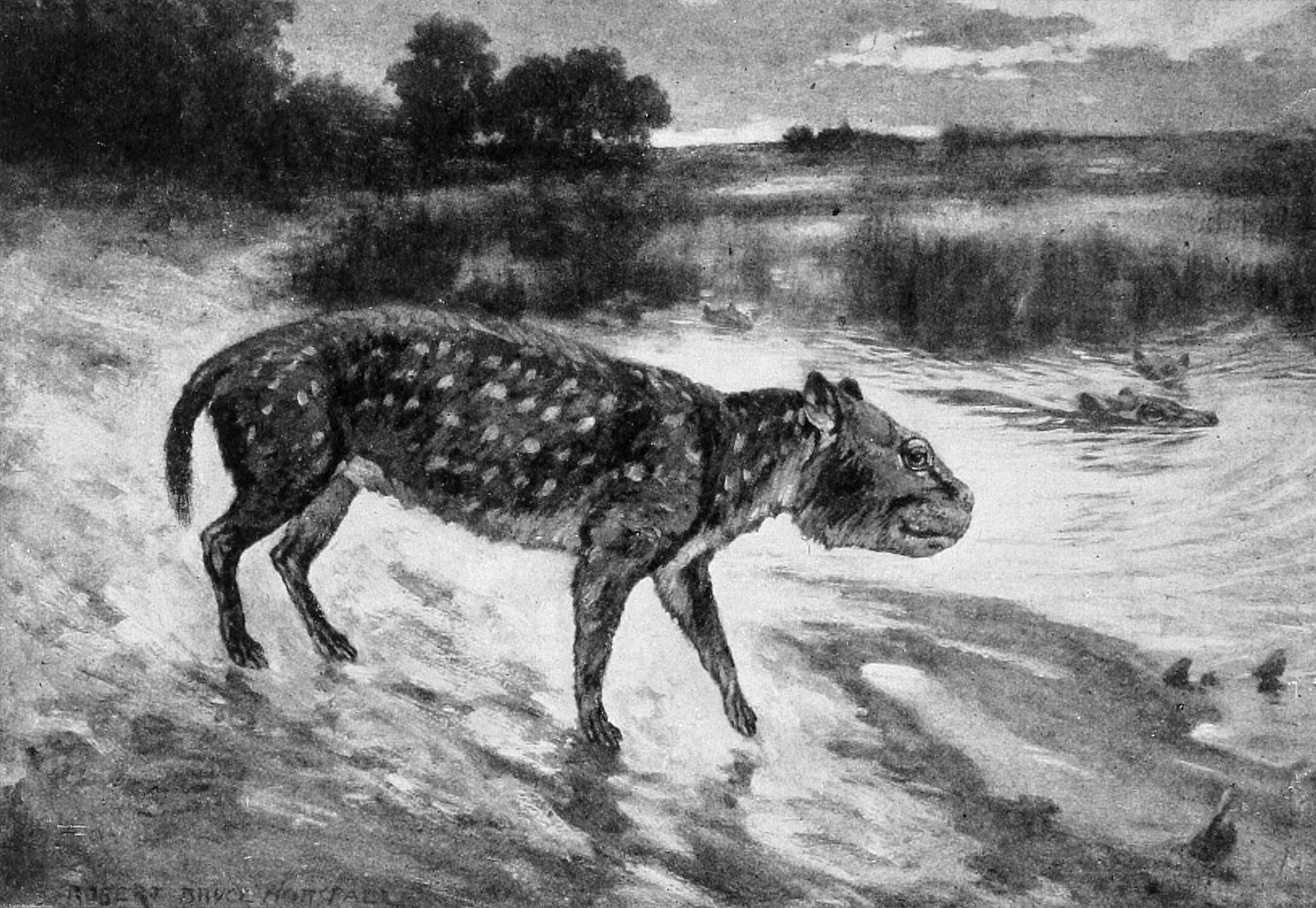Sespia on:
[Wikipedia]
[Google]
[Amazon]
''Sespia'' ("of ''Sespia'' at fossilworks
/ref> ''Sespia'' was cat to goat-sized and desert-dwelling. The genus was closely related to the larger '' Leptauchenia''. Fossils of the best known species, the cat-sized ''S. californica'', have been found
Fossils of the best known species, the cat-sized ''S. californica'', have been found
Sespe Creek
Sespe Creek (Chumashan languages, Chumash: S'eqp'e', "Kneecap") is a stream, some long,U.S. Geological Survey. National Hydrography Dataset high-resolution flowline dataThe National Map accessed March 16, 2011 in Ventura County, California, Ve ...
") is an extinct genus
Genus (; : genera ) is a taxonomic rank above species and below family (taxonomy), family as used in the biological classification of extant taxon, living and fossil organisms as well as Virus classification#ICTV classification, viruses. In bino ...
of oreodont
Merycoidodontoidea, previously known as "oreodonts" or " ruminating hogs," are an extinct superfamily of prehistoric cud-chewing artiodactyls with short faces and fang-like canine teeth. As their name implies, some of the better known forms we ...
endemic to North America
North America is a continent in the Northern Hemisphere, Northern and Western Hemisphere, Western hemispheres. North America is bordered to the north by the Arctic Ocean, to the east by the Atlantic Ocean, to the southeast by South Ameri ...
. They lived during the Late Oligocene
The Chattian is, in the geologic timescale
The geologic time scale or geological time scale (GTS) is a representation of time based on the rock record of Earth. It is a system of chronological dating that uses chronostratigraphy (the pro ...
26.3—24.8 mya, existing for approximately ./ref> ''Sespia'' was cat to goat-sized and desert-dwelling. The genus was closely related to the larger '' Leptauchenia''.
 Fossils of the best known species, the cat-sized ''S. californica'', have been found
Fossils of the best known species, the cat-sized ''S. californica'', have been found California
California () is a U.S. state, state in the Western United States that lies on the West Coast of the United States, Pacific Coast. It borders Oregon to the north, Nevada and Arizona to the east, and shares Mexico–United States border, an ...
and are known from literally thousands of specimens. The largest species, the goat-sized ''S. ultima'', is known from late Oligocene deposits in Nebraska
Nebraska ( ) is a landlocked U.S. state, state in the Midwestern United States, Midwestern region of the United States. It borders South Dakota to the north; Iowa to the east and Missouri to the southeast, both across the Missouri River; Ka ...
. ''S. ultima'' was once placed in a separate, monotypic, genus as ''Megasespia middleswarti''. Other species were once placed within ''Leptauchenia''.
References
External links
San Diego Natural History Museum
The San Diego Natural History Museum is a museum in Balboa Park in San Diego, California. It was founded in 1874 as the San Diego Society of Natural History. It is the second oldest scientific institution west of the Mississippi and the oldest ...
"Fossil Mysteries Field Guide: ''Sespia californica''
Oreodonts
Oligocene Artiodactyla
Fossil taxa described in 1930
Prehistoric Artiodactyla genera
Oligocene mammals of North America
{{paleo-eventoedungulate-stub